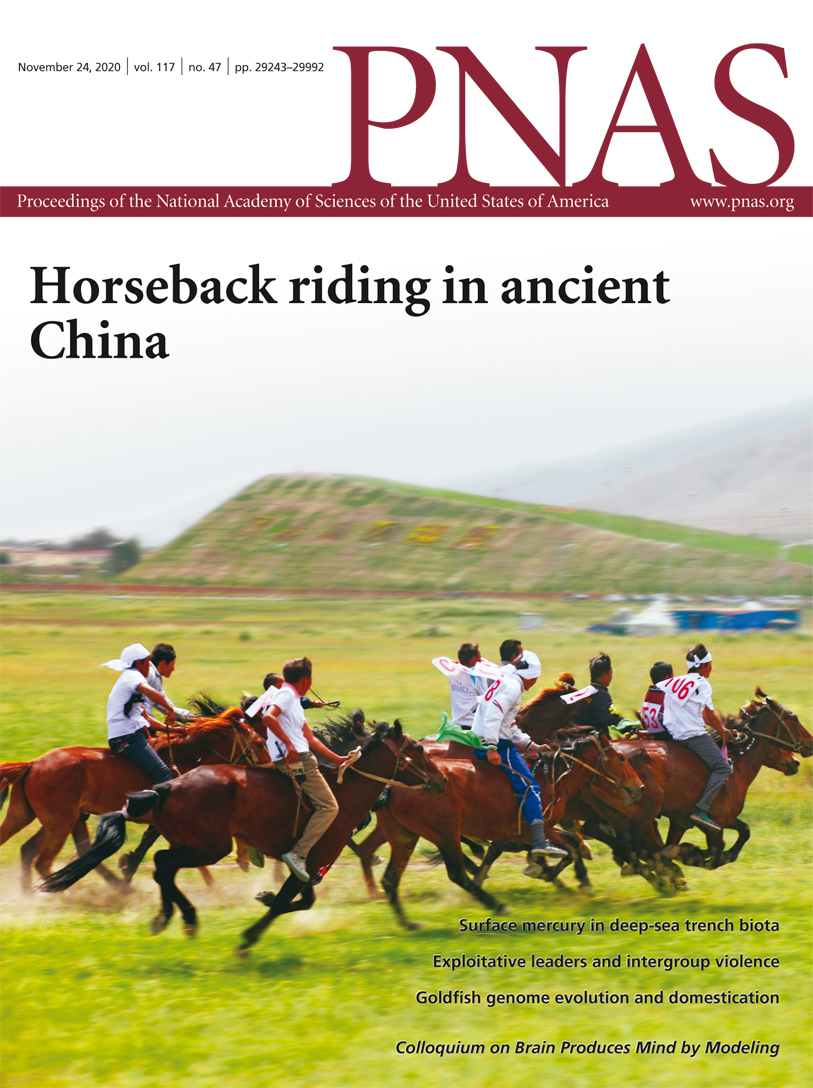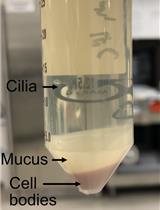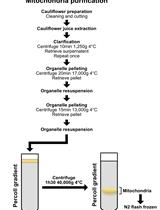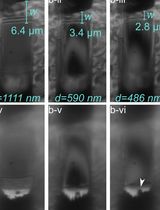- EN - English
- CN - 中文
Purification of Mitochondrial Ribosomal Complexes from Trypanosoma cruzi and Leishmania tarentolae for Cryo-EM Analysis
克氏锥虫和塔氏利什曼原虫线粒体核糖体复合物的纯化及低温电子显微镜分析
发布: 2022年05月20日第12卷第10期 DOI: 10.21769/BioProtoc.4425 浏览次数: 2980
评审: Alba BlesaNathan Rhys JamesAli Asghar Kermani
Abstract
Kinetoplastids are unicellular eukaryotic parasites responsible for human pathologies such as Chagas disease, sleeping sickness or Leishmaniasis, caused by Trypanosoma cruzi, Trypanosoma brucei, and various Leishmania spp., respectively. They harbor a single large mitochondrion that is essential for the survival of the parasite. Interestingly, most of the mitochondrial gene expression machineries and processes present significant differences from their nuclear and cytosolic counterparts. A striking example concerns their mitochondrial ribosomes, in charge of translating the few essential mRNAs encoded by mitochondrial genomes. Here, we present a detailed protocol including the specific procedures to isolate mitochondria from two species of kinetoplastids, T. cruzi and L. tarentolae, by differential centrifugations. Then, we detail the protocol to purify mitochondrial ribosomal complexes from these two species of parasites (including ribosomal maturating complexes) by a sucrose gradient approach. Finally, we describe how to prepare cryo-electron microscopy (cryo-EM) grids from these two sorts of samples. This protocol will be useful for further studies aiming at analyzing mitochondrial translation regulation.
Keywords: Kinetoplastids mitochondria (动质体线粒体)Background
Kinetoplastids are unicellular eukaryotic parasites, causative agents of several human and livestock pathologies (Stuart et al., 2008). They are potentially lethal, affecting tens of millions of people worldwide (Stuart et al., 2008). They have strongly diverged from other eukaryotic model species, in part because of their obligatory parasitic nature. Kinetoplastids evolved to live in and infect a large variety of eukaryotic organisms in extremely different molecular environments. Thus, beyond the general similarities, kinetoplastid species have diverged evolutionarily from each other and their protein sequence identity can be relatively low (Jackson et al., 2016). They possess a single large mitochondrion, where gene expression machineries, namely the mitochondrial ribosomes (mitoribosomes), have also largely diverged (Amunts et al., 2015; Desai et al., 2017; Bieri et al., 2018; Ramrath et al., 2018; Waltz and Giege, 2020; Waltz et al., 2020). The mitoribosomes are RNA-proteins complexes that translate the few mRNAs still encoded by mitochondrial genomes. Their composition and structure greatly diverged from that of the bacterial ancestor, with the most extreme case described to date being in fact the kinetoplastid mitoribosomes. With highly reduced rRNAs, and more than 80 additional ribosomal proteins (r-proteins) compared to bacteria, the overall ribosome structure is significantly reshaped. Recent structural studies performed on Trypanosoma brucei have highlighted the particularities of this mitoribosome structure and composition as well as the assembly processes of the small subunit (SSU) (Ramrath et al., 2018; Saurer et al., 2019).
The comprehensive structural characterization of the full T. brucei mitoribosomal complexes required a sophisticated purification protocol based on affinity purification of several tagged potential ribosomal proteins/factors, not mentioning the expensive special growth medium required for the culture of T. brucei parasite (Ramrath et al., 2018; Saurer et al., 2019). Our study was based on T. cruzi and L. tarentolae species, which are more convenient and cheaper to grow in vitro. In addition, our sucrose gradient purification protocols are significantly simpler, as they do not require the tagging of any mitoribosomal proteins/factors, nor do they require affinity purification. Finally, our purification protocols can be adapted to enrich on other mitochondrial complexes, such as ATP synthase and different subunits and molecules from the respiratory chain complexes.
It is worth mentioning that around the same time of the publication of our study (Soufari et al., 2020), two partially overlapping studies were published (Jaskolowski et al., 2020; Tobiasson et al., 2021).
Materials and Reagents
Cells
Leishmania tarentolae UC strain (ATTC®, catalog number: PRA-229TM)
Trypanosoma cruzi Y strain, provided by Marcelo Sousa Silva (Universidae Nova de Lisbo, Lisboa, Portugal) and João Aristeu da Rosa (Department of Biological science, Araraquara, Brazil) (Rimoldi Ribeiro et al., 2018)
Growth of cells
DifcoTM Liver infusion broth (BD Bioscience, catalog number: 226920)
Bacto Tryptose (BD Bioscience, catalog number: 211713)
Sodium chloride (Sigma-Aldrich, catalog number: S5886)
Sodium phosphate dibasic (Sigma-Aldrich, catalog number: 53264)
Potassium chloride (Sigma-Aldrich, catalog number: P9333)
Glucose (Sigma-Aldrich, catalog number: G8270)
Hemin (Sigma-Aldrich, catalog number: H9039)
Fetal Bovine Serum heat inactivated (Dutscher Dominique, catalog number: 702780)
Brain Heart Infusion Broth (Sigma-Aldrich, catalog number: 53286)
Penicillin/Streptomycin 10,000 U/mL (GibcoTM, catalog number: 15140-122)
LIT medium (see Recipes)
1.25 mg/mL Hemin solution (see Recipes)
BHI medium (see Recipes)
38-mL Ultra clear tubes (Beckman Coulter, model: 344058 or equivalent)
50-mL FalconTM tubes
1.5-mL Eppendorf Safe-Lock tubes
Sorbitol (Sigma-Aldrich, catalog number: S1876)
Sucrose (Sigma-Aldrich, catalog number: 16104-2)
Glucose (Sigma-Aldrich, catalog number: G8270)
Sodium Chloride (Sigma-Aldrich, catalog number: S5886)
Tris (Sigma-Aldrich, catalog number: 10708976001)
Hydrochloric Acid (Sigma-Aldrich, catalog number: 320331)
Magnesium Chloride (MgCl2·6H2O) (Sigma-Aldrich, catalog number: M2670)
HistodenzTM (Sigma-Aldrich, catalog number: D2158)
EDTA (Sigma-Aldrich, catalog number: EDS)
DNase I, grade II from bovine pancreas (Roche, catalog number: 10104159001)
Sodium phosphate monobasic monohydrate (Sigma-Aldrich, catalog number: S9638)
Sodium phosphate dibasic heptahydrate (Sigma-Aldrich, catalog number: S9390)
Tris-HCl pH 7.5 (Sigma-Aldrich, catalog number: T2319)
Tris-HCl pH 8 (Sigma-Aldrich, catalog number: T2694)
Nitrogen cylinder
Phosphate buffer pH 7.9 (see Recipes)
Wash buffer (see Recipes)
SoTE buffer (see Recipes)
SoTE-EDTA buffer (see Recipes)
SoTM buffer (see Recipes)
Discontinous HistodenzTM gradient for L. tarentolae (see Recipes)
Discontinous HistodenzTM gradient for T. cruzi (see Recipes)
Mitoribosome purification
HEPES-KOH (Euromedex, catalog number: 10-110-C)
Triton X-100 (Sigma-Aldrich, catalog number: T9284)
Magnesium chloride hexahydrate (Sigma-Aldrich, catalog number: M2670)
Potassium chloride (Sigma-Aldrich, catalog number: P9333)
n-Dodecyl β-D-maltoside: DDM (Sigma-Aldrich, catalog number: D4641)
Complete EDTA-free protease inhibitor cocktail (Sigma-Aldrich, catalog number: 11873580001)
DL-Dithiothreitol (Sigma-Aldrich, catalog number: D0632)
Sucrose (Sigma-Aldrich, catalog number: S7903)
HEPES-KOH pH 7.6 (see Recipes)
Mitochondria Lysis buffer (see Recipes)
Monosome buffer (see Recipes)
40% Sucrose cushion (see Recipes)
10–30% Sucrose gradient (see Recipes)
Equipment
Growth of cells
PSM HeraSafe KS12 (Thermo scientificTM, catalog number: 15227966)
Innova®-42 Incubator Shaker (Eppendorf, New BrunswickTM, catalog number: M13350012)
Sterile 5-L Erlenmeyer (DURAN®, catalog number: 212167307) with silicone sponge closure (Sigma-Aldrich, catalog number: C1046)
Malassez counting cell (Sigma-Aldrich, catalog number: BR719005)
Mitochondria purification
45-mL Cell Disruption Bombs (Parr Instrument Co., catalog number: 16-6950)
Centrifuge (Beckman-coulter, model: Avanti j-26XP or equivalent) able to take fixed-angle rotor 4 × 1 L.
Fixed-angle rotor 4 × 1 L (Beckman-coulter, model: JLA9.1 or equivalent)
4 × 1-L centrifuge bottles (Beckman-coulter, model: 1L Bottle Assy, J-Lite, PP, 95 × 191 mm, part number: A98813)
Fixed-angle rotor 12 × 39-mL (Beckman Coulter, model: 50.2 Ti or equivalent)
26.3-mL centrifuge bottle (Beckman Coulter, model: 355654 or equivalent)
KIMBLE® Dounce tissue grinders, 15 mL (Sigma-Aldrich, catalog number: D9938)
50-mL centrifuge (Sigma, model: 3-18KS or equivalent)
10-mL Syringe (TerumoTM, catalog number: 8SS10S21381)
Hypodermic needle N°25 (TerumoTM, catalog number: 8AN1925R1)
Ultracentrifuge (Beckman Coulter, model: OPTIMA L80XP Or equivalent), able to take SW28 rotor
Swinging rotor 6 × 38-mL (Beckman Coulter, model: SW28 or equivalent)
Microcentrifuge for 1.5-mL tubes (Eppendorf: 5425R, catalog number: 5405000158)
Mitoribosome purification
Gradient master 108 (BioComp Instruments, catalog number: 108)
Piston Gradient Fractionator (BioComp Instruments, catalog number: 152)
Ultracentrifuge (ThermoFisher Scientific, model: SorvallTM WX, or equivalent, catalog number: 15362177), able to take TH-641 tubes
Swinging rotor 6 × 13-mL (ThermoFisher Scientific, model: TH-641 or equivalent, catalog number: 12161690)
TH-641 tubes: 13.2-mL, Open-top polyclearTM centrifuge tube (Seton Scientific, catalog number: 7030)
Ultracentrifuge (Beckman Coulter, model: OPTIMA MAX XP or equivalent), able to take TLA 110 rotor
Fixed-angle rotor 6 × 4-mL (Beckman Coulter, model: TLA110.3 or equivalent)
TLA110.3 tubes: 3.5-mL, Open-top Thickwall Polypropylene tube (Beckman Coulter, catalog number: 349623)
A rotating wheel for 1.5-mL tubes (IKATM, catalog number: 0004016000)
KIMBLE® Dounce tissue grinders, 2 mL (Sigma-Aldrich, catalog number: D8938)
Mitoribosome cryo-grid preparation and data collection
Quantifoils R2/2 EM grids (Electron Microscopy Sciences, catalog number: Q210CR2)
Cryo-grid TEM grid boxes (Agar Scientific, catalog number: AGG3727)
Safematic CCU-010 carbon coater or equivalent (Labtech-EM, catalog number: 100001)
Glow discharge system from ELMO or equivalent (Agar Scientific, catalog number: AGB8958)
Thermo Fisher Vitrobot Mark IV or equivalent
Procedure
文章信息
版权信息
© 2022 The Authors; exclusive licensee Bio-protocol LLC.
如何引用
Durrieu-Gaillard, S., Sissler, M. and Hashem, Y. (2022). Purification of Mitochondrial Ribosomal Complexes from Trypanosoma cruzi and Leishmania tarentolae for Cryo-EM Analysis. Bio-protocol 12(10): e4425. DOI: 10.21769/BioProtoc.4425.
分类
生物物理学 > 单分子技术
生物物理学 > 显微技术 > 低温显微镜技术
分子生物学 > RNA > RNA-蛋白质相互作用
您对这篇实验方法有问题吗?
在此处发布您的问题,我们将邀请本文作者来回答。同时,我们会将您的问题发布到Bio-protocol Exchange,以便寻求社区成员的帮助。
提问指南
+ 问题描述
写下详细的问题描述,包括所有有助于他人回答您问题的信息(例如实验过程、条件和相关图像等)。
Share
Bluesky
X
Copy link












